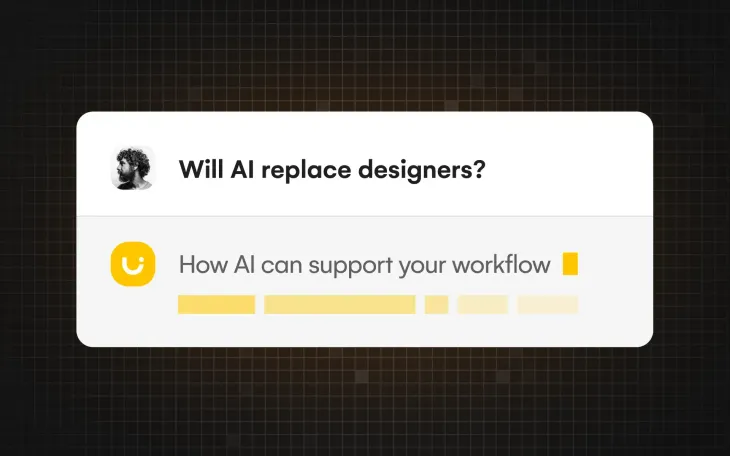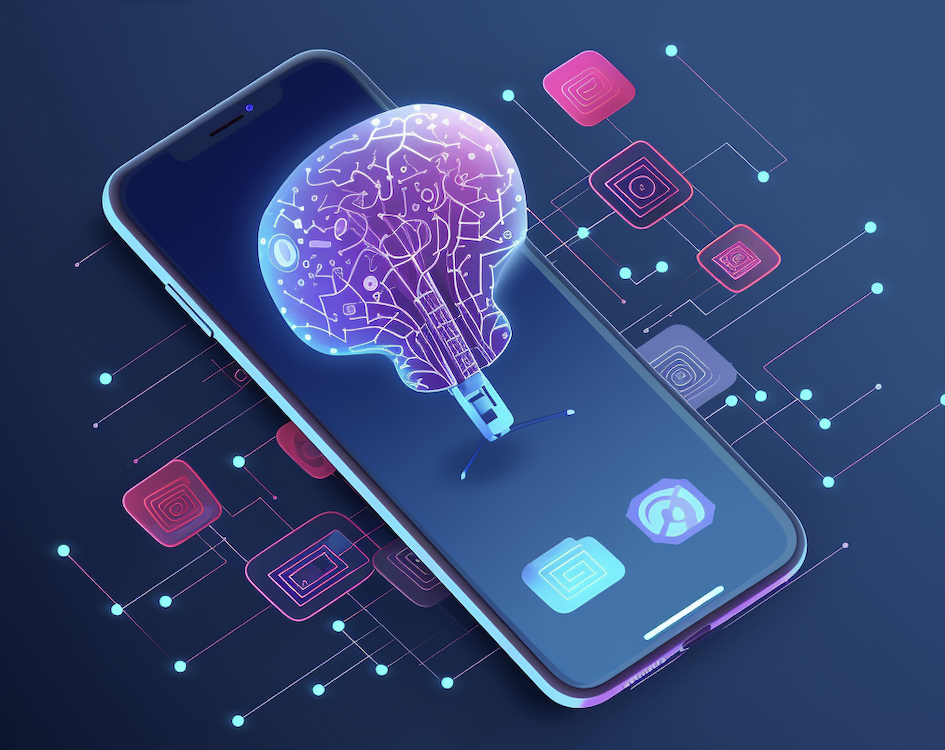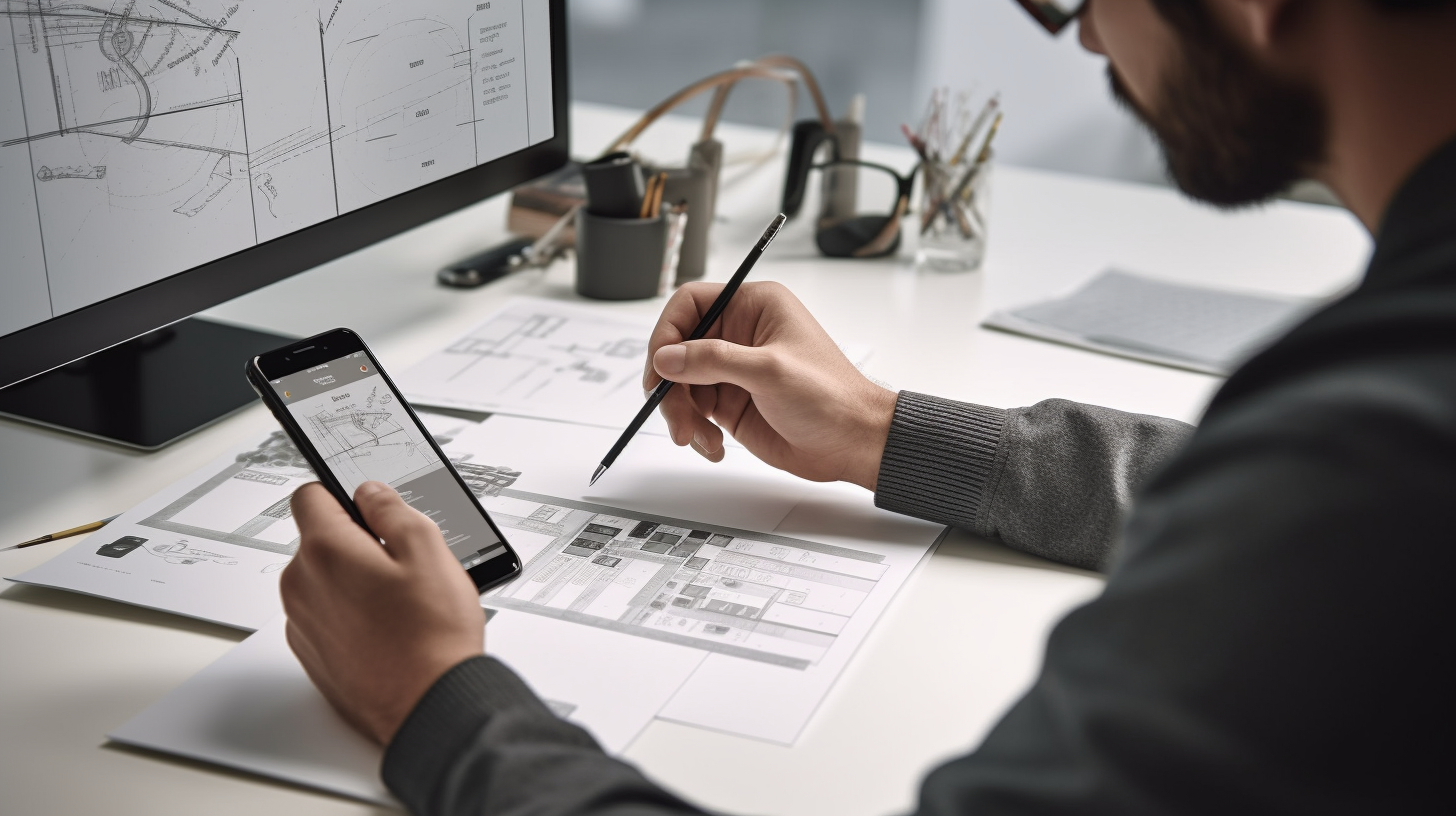Will AI replace UX designers? How AI can support your workflow

AI is transforming the UX design landscape like never before. By harnessing artificial intelligence and machine learning algorithms, designers can now analyze user behavior, predict customer needs, and even generate designs from simple text prompts. More than that though, the advent of the artificial intelligence age is empowering more people to get involved with the design process than ever before.
How worried do you need to be that AI-powered tools are going to replace professions in their entirety though? A recent paper published by Open AI revealed an exhaustive list of roles that they believe are most at risk of being affected by AI or AI-powered technology. From AI-powered UX/UI design tools, such as Uizard, to image generation tools, such as Midjourney, we are starting to see artificial intelligence reach every corner of the tech sphere.
Instead of seeing AI as a threat, the emergence of AI tools should instead be seen as an opportunity to supercharge creativity and productivity whilst also massively improving workflows and outputs. With that said, here's the lowdown on whether AI will replace UX designers, and how you can utilize fantastic AI UI design tools, such as Uizard, to streamline the way you work.

Skip to section:
AI and UX/UI design: Myths and realities
The future of design jobs and AI
How AI can support your workflow
AI in UX design
Although AI in UX design is a relatively new field, its capacity to revolutionize digital product design has advanced in a multitude of ways. For example, in the past year alone, Uizard has added screenshot to editable mockup to its list of AI features and announced Autodesigner, the world’s first text to mockup, AI UI generator feature.
Here are the benefits AI-powered tools have the potential to bring to the world of UX design:
Increased efficiency and productivity
Using machine learning algorithms, AI can assist designers in various tasks, such as analyzing user behavior, personalizing content, and predicting user needs. Perhaps more importantly though, it can automate repetitive and time-consuming tasks, such as wireframing and content creation. This will have a profound impact on how UX designers approach tasks, freeing up time spent on more menial jobs to focus on the more ‘human’ creative tasks.
Enhancing user experience
By analyzing user data and behavior, AI will also be able to assist designers in creating products that better meet users' needs and expectations. AI also has the potential to transform user testing, helping UI designers create faster but also produce more workable designs before even beginning iteration. Although in its infancy, AI for user testing is becoming a very real prospect for streamlining design feedback.
Accelerating prototyping and iteration
AI-powered design assistants, such as Uizard, have the potential to transform how designers approach app design, prototyping, and iteration. With Uizard you can import sketches of wireframes, transform screenshots of other apps into editable mockups, you can even generate UI with simple text prompts. Going from idea to prototype has never been easier!
AI is still in its formative stages within the context of UX design, but its potential to transform the field is immense. With AI in our toolkits, we can design more efficiently and effectively than ever before.

AI and UX/UI design: Myths and realities
As AI continues to reshape the UX design landscape, several myths have emerged as part of the discussion around AI design tools, which has contributed to the general concern about AI tech replacing jobs. Let's look at some common misconceptions about AI design in closer detail:
AI will replace UX designers
Ultimately, AI won't replace UX designers in either the short or long term. AI can assist designers in tasks like data analysis and testing, but it can't replace the creative skills and problem-solving abilities of humans. AI enthusiast and author John Maeda emphasizes that AI can't generate ideas, employ empathy, or demonstrate intuition; these are qualities unique to humans.
UX design will become fully automated
Again, AI can automate specific UX design tasks like data analysis and testing, but it can't replace the entire design process. UX design demands a human touch, including empathy, creativity, and critical thinking, which AI can't replicate.
Even tools such as Uizard Autodesigner, which provides AI UI generation from simple text, are only intended to support the UX design process and speed up prototyping. Once Autodesigner generates an idea, the onus is still on the team or designer involved to make the design their own with branding, user journeys etc.
The future of design jobs and AI
While AI has the potential to automate specific tasks, jobs requiring creativity, empathy, and critical thinking – qualities unique to humans – are less likely to be replaced. Examples include writers, artists, designers, healthcare providers, and educators who depend on social skills. AI will, however, impact these jobs by assisting humans and augmenting their skills. AI can help writers generate ideas and edit their work, it can aid artists and designers in exploring new ideas and design possibilities, and it can even generate or replicate code to support developers to work faster than ever.
While the future of design jobs and AI remains uncertain, one thing is clear: AI won't entirely replace human designers. By understanding AI's limitations and possibilities in design, designers can harness the technology's potential, creating more efficient and effective products.
Transform screenshots into editable UI mockups with Uizard
How AI can support your workflow
Looking to supercharge your workflow with AI-powered UI design? Here’s how tools such as Uizard can support you to boost project speed, creativity, and outcomes…
- Predictive analytics: AI can analyze user data to predict their needs and behavior, allowing designers to create more personalized and relevant experiences. For example, Uizard's Focus Predictor uses AI to establish 'hotspots' in an app or web design, showcasing where a user's attention will be when navigating a design.
- Personalization: AI can personalize the user experience based on their preferences and behavior. For example, Amazon uses AI to recommend products to users based on their purchase history and browsing behavior.
- Automation: AI can automate repetitive tasks, such as data analysis and testing, or basic design tasks, freeing up designers' time to focus on more creative and high-level work. For example, Uizard Screenshot can turn images of apps or websites into interactive prototypes in minutes, automating the prototyping process and allowing designers to test and refine their designs more quickly.
- Augmentation: AI can augment designers' skills by creating design elements from data alone. For example, Uizard Autodesigner allows users to describe an app, web, or UI idea in simple plain text and generate a unique, multi-screen design in a matter of seconds - the more descriptive you are when you use Autodesigner, the more accurate the output is to your product goals.
AI is not a replacement for human designers, but rather a tool to assist them in their work. By embracing the potential of AI, designers can create more efficient and effective products that better meet users' needs and expectations.
Ready to give AI design a go with your next project? Uizard is free to use and provides you with several ways to kickstart your project such as scanning in your hand-drawn wireframes or turning screenshots of apps or webpages into editable mockups. Join the AI design revolution today and bring your idea to life faster than ever before.
